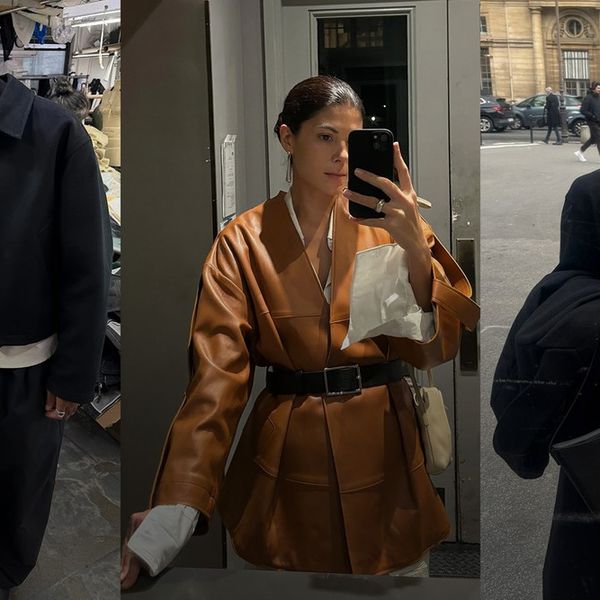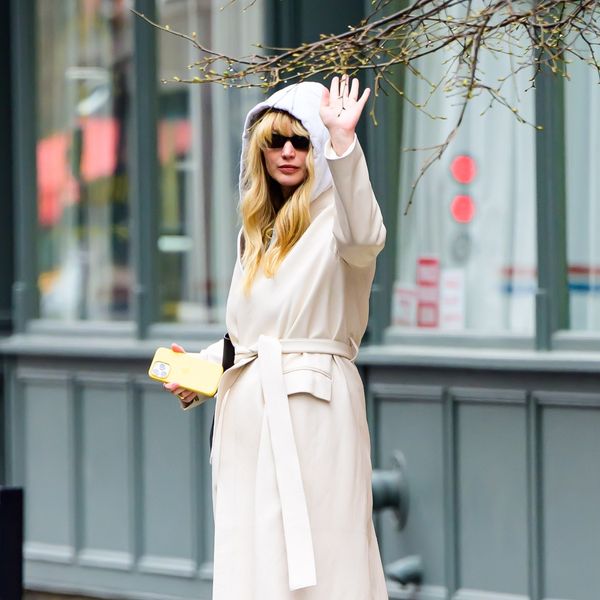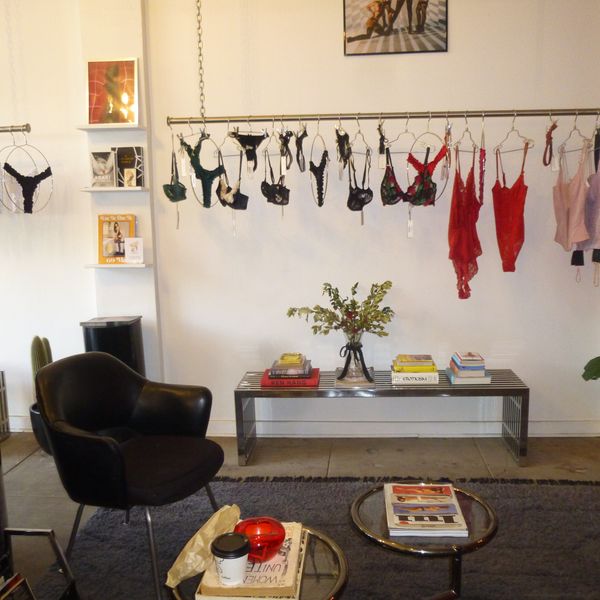Inside the Beauty Industry's Obsession with White Packaging
How the science behind color psychology influences your favorite brands.

If you scroll through social media, you’ll surely come across an image of a tightly curated vanity or medicine cabinet, complete with artfully arranged cleansers, serums, and solutions. But if you pause and take a closer look, a commonality—aside from the concept of the image itself—emerges: white packaging. Brands like Olaplex, Ouai, La Roche Posay, La Mer, Supergoop, Inkey List, and Dermalogica, to name a few, all use this color, or similar muted neutral tones, as a representation of their brand identity. What’s the rationale behind all of this sameness?
Color psychology, the study of how color can elicit or trigger certain feelings, perceptions, and behaviors, is at the core of the packaging development process. Studies have shown that the visual elements of packaging directly impact whether or not someone buys a beauty product, transforming both materials and colors as make-or-break factors for brands. Color can even translate formula efficiency and determine brand reputability, making choosing the right tone crucial for an impactful first impression. Black, for example, is the signature color behind beauty brands like Nars and MAC Cosmetics, representing exclusivity and sophistication. It’s hard to visualize these brands separate from their symbolic hues.
White is the most common color in personal care packaging. According to color psychology, the hue symbolizes purity and cleanliness, directly correlating to the product's imagined properties. When a body wash or facial cleanser is enclosed in white packaging, those feelings and attitudes surrounding the color are bestowed onto the product. In a world like beauty, where outside appearances are so important, it’s no coincidence that with packaging, the exterior determines what’s inside.
According to Alex Ehsani, Founder and CEO of Vida Labs Australia, a manufacturing company assisting cosmetic brands with packaging design, colors elicit emotional responses. “Not only do they convey the brand's values, but they also evoke emotion in the consumer, often setting expectations about the quality of the product,” Ehsani says. “In skincare, for example, whites can imply clinical effectiveness. It exudes simplicity and understated sophistication.”
Aside from the safe white exteriors, some brands have explored non-traditional beauty packaging. Brands like Monday Haircare, Ultra Violette, and Sofie Pavitt Face are experimenting with colors that fall outside of the expected.
Monday, an affordable haircare lineup aiming to make luxury more inclusive, is recognized for its signature pink packaging. “Hundreds of hours were spent sampling and prototyping the hue to ensure the perfect blush tone was created,” says Jaimee Lupton, founder of Monday Haircare. “The resulting pink has not only strongly resonated with the target millennial and Gen Z demographic, but has become synonymous with Monday’s brand identity.”
Here, the perfect hue of pink unlocks the eyes of a target audience who grew up reusing Glossier’s pink pouches and drinking Cha Cha Matcha. The natural lure of the millennial pink color choice innately attracts their consumer with ease or even muscle memory. Nestled amongst the almost sterile, crowded store shelves, the product’s pink hue undoubtedly pops against its competitors and conveys an aesthetically pleasing allure.
One can find vibrant greens and vivid yellows across the product line for Sofie Pavitt Face. Imagine the Clean Clean Cleanser or Mandelic Clearing Serum on a shelf, surrounded by products housed in white or neutral packaging. They stand out, immediately pulling the eye toward them. Tired of muted pastels and gradients of white, Sofie Pavitt, a New York-based esthetician and founder of the brand, intentionally chose these shades for their attention-drawing qualities.
Color and packaging can also challenge product perceptions and urge consumers to rethink integrating a necessary product into their routine—like sunscreen. Ultra Violette, a new-generation Australian sunscreen brand, ditches the stereotypical big pumps and squeezy tubs that can ruin a beach day and instead uses serum-like exteriors.
“We were the first brand to put SPF in a serum dropper and use airless pumps for precise dosage and a more prestigious look. These components were commonly seen in skincare and never suncare,” says Ava Chandler-Matthews, Ultra Violette co-founder. This shape-shifting move is reflected in the product names, known as Skinscreen, not sunscreens.
“We knew we wanted our customer to look at our range and think, ‘Wow, that doesn’t look like SPF—that looks like skincare’ and elevate the category out of beach bags and into bathroom shelves,” Chandler-Matthews says. In a way, this product design made sunscreen more easily integrated into a routine. It reframed the product as a natural extension of skincare as the final, but arguably most important, step of one’s routine.
Ultra Violette wanted to stay true to the classics of blue and yellow, a combo that’s become synonymous with the sun category. “I wanted to do something that felt fresh and modern but vibrant as the brand’s tone of voice would reflect this,” Chandler-Matthews shares. “The secondary colors are pastel neons, meant to reflect the neon zinc sticks we all wore as kids on the beach in Australia in the ‘90s. They’re also just really fun and imbue a sense of light-heartedness.”
On the other hand, white is embraced by the democratizing skincare brand The Ordinary. Here, the simplicity behind white equates to cleanliness and clinical efficiency. “These packaging choices support our brand ethos: simple packaging allows our key ingredients and formulations to take center stage. This minimalist, no-fuss approach evokes quality, credibility, and trust. Less is more couldn’t be truer for our packaging,” says Ken Li, head of global packaging design at Deciem. Focusing on clear and direct communication, the brand doesn’t distract with vibrant colors or images. Instead, it communicates simplicity in a formulation’s function, benefit, and application with minimal branding elements.
Through simplicity, The Ordinary is known for championing a to-the-point skincare approach. Most of their products have one or two ingredients and appear as if they came fresh from the laboratory in a glass dropper bottle. “The formulation is the hero, and the packaging is its humble carrier,” says Li. “When it comes to packaging design, form follows science.”
Naturally, the color and physical packaging are an eye into the brand. They unveil a process, journey, and belief system while also acting as an extension of the brand’s ethos. Most importantly, they hold the power to tell a story. In a world where packaging directly correlates to sales, it’s about selecting a shade from the rainbow of Pantone selections to convey an impassioned and intentional message.




